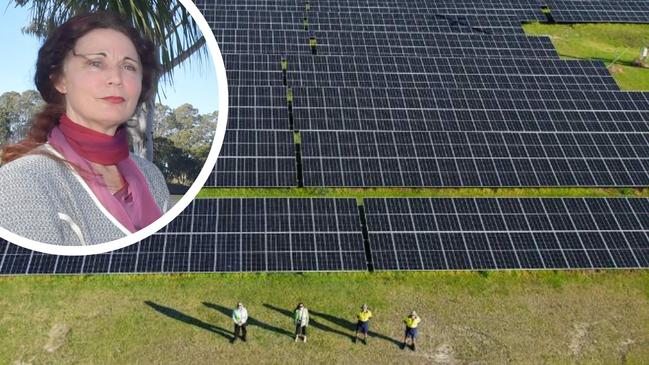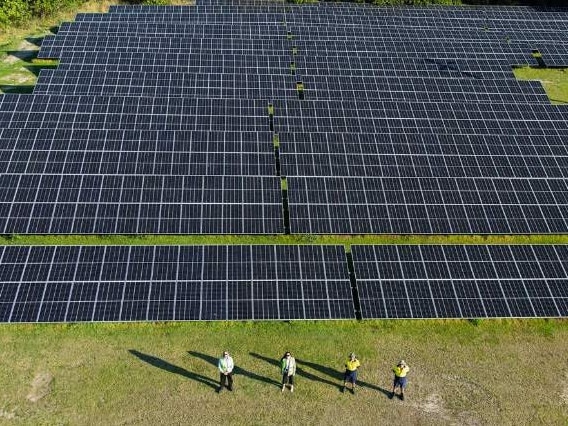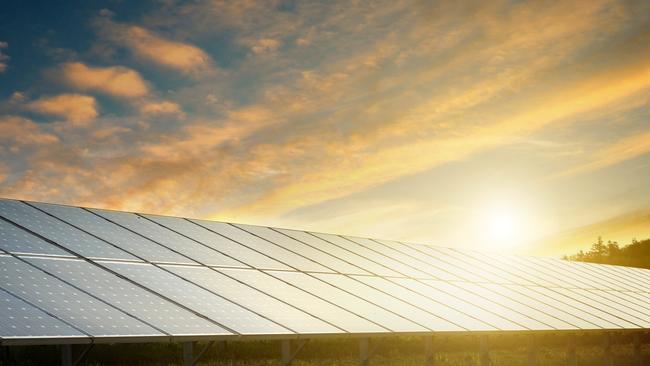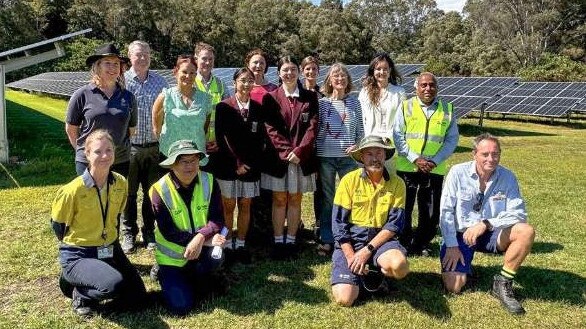Tweed Shire council unveils its $1M footy field sized solar plant
A Northern NSW council has unveiled a whopping football-sized solar farm which will save ratepayers more than $100,000 in electricity bills and make them the leading solar power adopters.

Tweed Heads
Don't miss out on the headlines from Tweed Heads. Followed categories will be added to My News.
A Northern NSW council is making big inroads with green energy alternatives after unveiling a whopping football field size solar array.
Tweed Shire Council’s wastewater plant will now be powered by 1208 high-efficiency solar panels with a capacity of 604 kilowatts at a newly installed Banora Point solar array.
This comes after the replacement of the plant’s ageing blowers and Return Activated Sludge pumps with new high efficiency units.
Mayor Chris Cherry said those assets were some of the biggest power consumers at the plant and their replacement had reduced their power consumption by up to seven per cent.
The combination will save council an estimated $140,000 off their annual electricity bill.

Cr Cherry said the Banora Point solar array had increased council’s renewable energy capacity by about 60 per cent, with more than 20 council facilities now host to 1.6 megawatts of solar energy.
“We are the top adopters of solar energy on the North Coast of NSW,” Cr Cherry said.
More than half of the Tweed Shire’s homes now use solar panels, giving the region an combined solar energy capacity of 125 megawatts.
Cr Cherry said it is “time to celebrate”.
“That’s the highest capacity of any local government area from Port Macquarie north to the Queensland border,” Cr Cherry said.

“Together, these energy efficiency projects are set to cut council’s greenhouse gas emissions by 747 tonnes a year.
“This is great news for our environment and goes a long way towards achieving our Renewable Energy Action Plan goal of cutting greenhouse gas emissions from our electricity use by 50 per cent by 2025.”
She said green energy projects reduce carbon emissions and ultimately benefit ratepayers by saving money on power bills.
More Coverage





